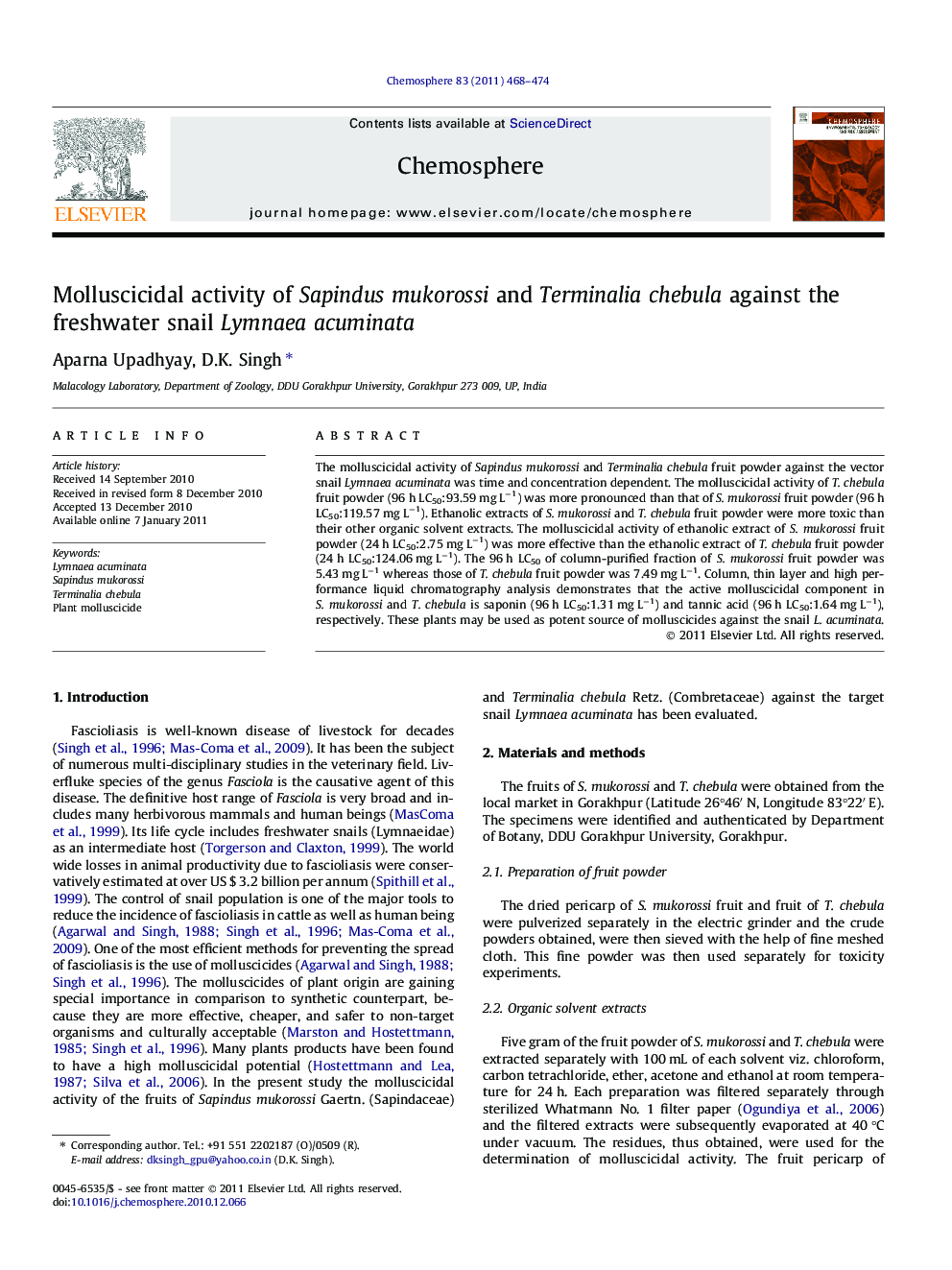| کد مقاله | کد نشریه | سال انتشار | مقاله انگلیسی | نسخه تمام متن |
|---|---|---|---|---|
| 4411068 | 1307577 | 2011 | 7 صفحه PDF | دانلود رایگان |

The molluscicidal activity of Sapindus mukorossi and Terminalia chebula fruit powder against the vector snail Lymnaea acuminata was time and concentration dependent. The molluscicidal activity of T. chebula fruit powder (96 h LC50:93.59 mg L−1) was more pronounced than that of S. mukorossi fruit powder (96 h LC50:119.57 mg L−1). Ethanolic extracts of S. mukorossi and T. chebula fruit powder were more toxic than their other organic solvent extracts. The molluscicidal activity of ethanolic extract of S. mukorossi fruit powder (24 h LC50:2.75 mg L−1) was more effective than the ethanolic extract of T. chebula fruit powder (24 h LC50:124.06 mg L−1). The 96 h LC50 of column-purified fraction of S. mukorossi fruit powder was 5.43 mg L−1 whereas those of T. chebula fruit powder was 7.49 mg L−1. Column, thin layer and high performance liquid chromatography analysis demonstrates that the active molluscicidal component in S. mukorossi and T. chebula is saponin (96 h LC50:1.31 mg L−1) and tannic acid (96 h LC50:1.64 mg L−1), respectively. These plants may be used as potent source of molluscicides against the snail L. acuminata.
Research highlights
► Sapindus mukurossi and Terminalia chebula can be used as potent molluscicide.
► HPLC demonstrates that active components of S. murukossi and T. chebula are saponin and tannic acid, respectively.
► Fascioliasis may be controlled effectively by using plant molluscicides.
Journal: Chemosphere - Volume 83, Issue 4, April 2011, Pages 468–474